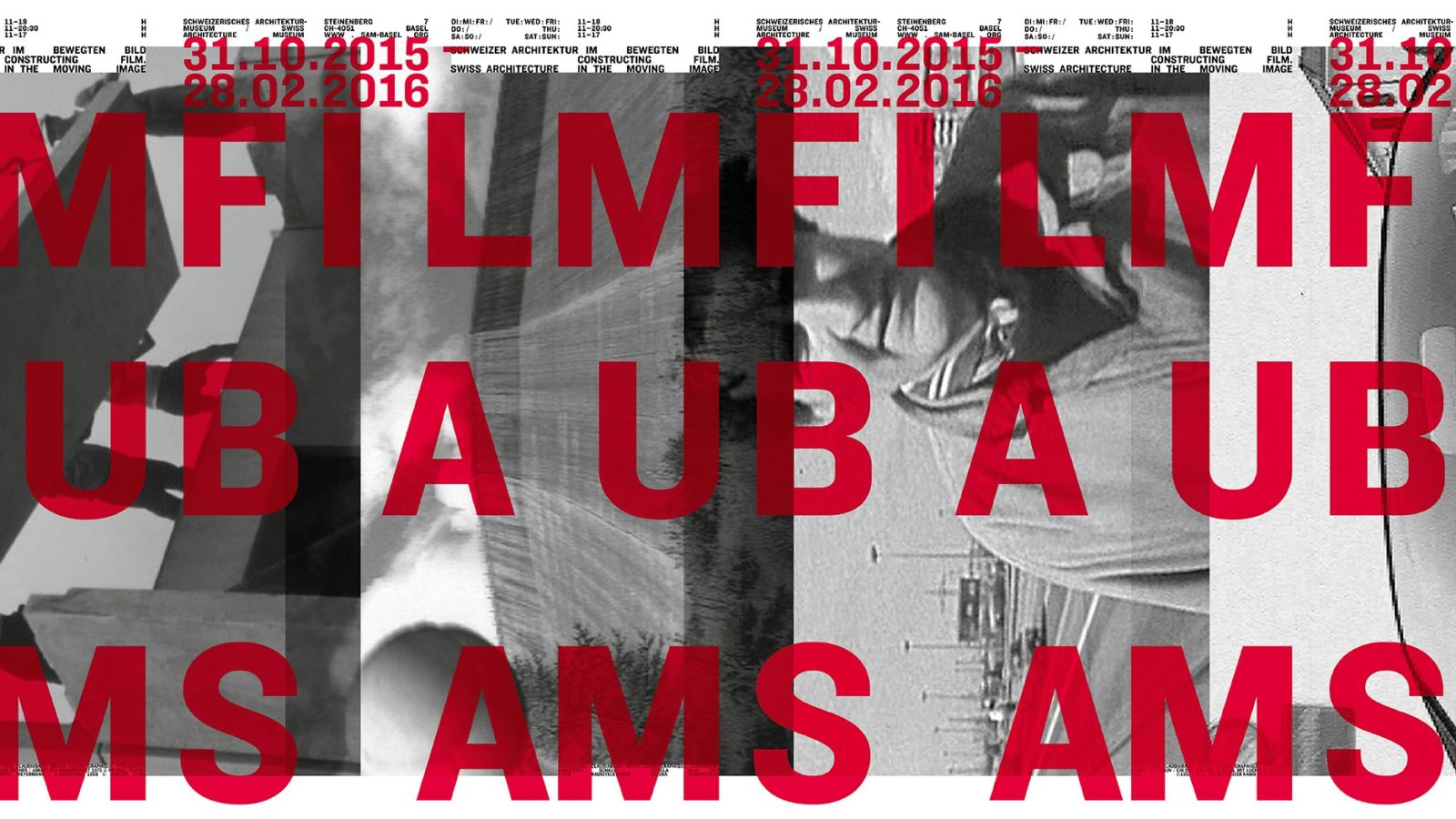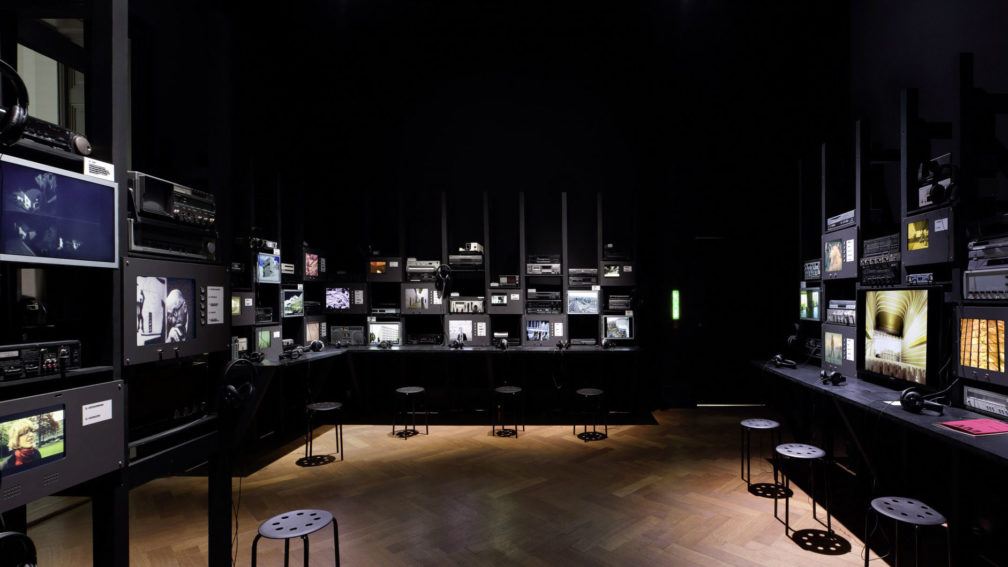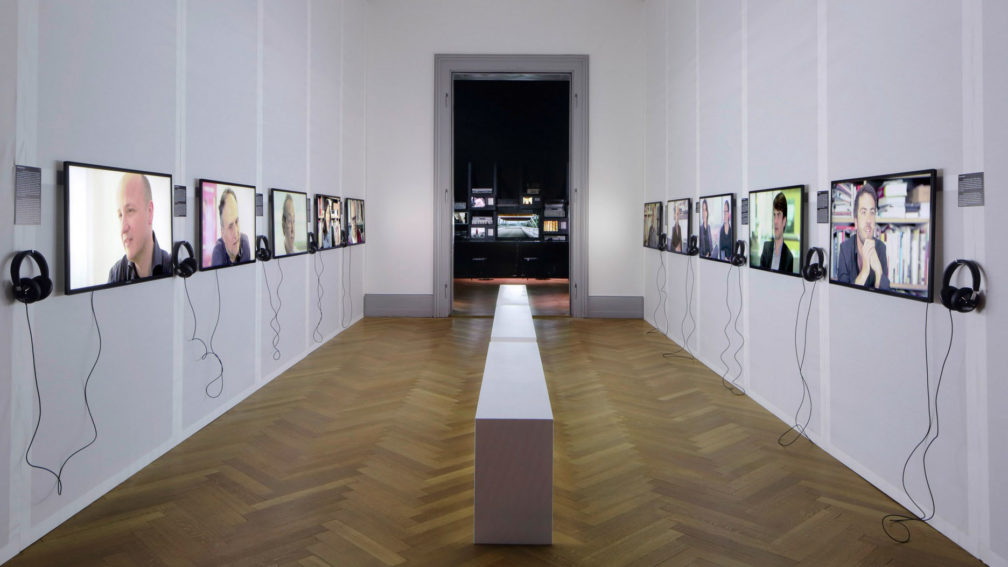Constructing Film: Swiss Architecture in the Moving Image 2015
S AM Swiss Architecture Museum, Basel
The complex relationship between architecture and film is illustrated on the basis of Swiss architectural projects from the last 25 years.
„Constructing Film: Swiss Architecture in the Moving Image“ sheds light on the potential of the moving image as an analytical tool and representation medium for architecture. After exhibitions on architectural photography and criticism, S AM is approaching another means of conveying building culture: film.
Film and architecture have numerous areas of overlap and common characteristics: in film, thanks to the creation of motion and temporality via the assembly of individual images, the real space finds an equivalent as an illusory space, which is completed by means of sound and light effects. Thus, due to its multidimensionality, film is the most suitable medium for reproducing architecture realistically. Moreover, much like the film director, the architect also steers courses of action through spatial frameworks.
The exhibition „Constructing film“ will go down a new path and for the first time, aside from the familiar film icons such as Fritz Lang’s Metropolis (1927) or Jacques Tati’s Playtime (1967), it will shed light on the various areas where film is used as a representation medium and analytical tool for architecture.
This exhibition examines the depictive and spatially exploratory aspect of film in various phases of the construction process, both in a university context and in practice: in the design phase, for instance, it is used as a tool for cinematic exploration and assessment of spatial constellations.
Furthermore, film serves as documentation of construction progress and of the finished project, be it for the office’s internal purposes or, for example, as a means of advertising for investors. Special attention is paid to the analysis of specific differences between film and established static representation media, such as photography, drawing and rendering. Ultimately, the interplay is also of interest: To what extent does cinematic vision create new possibilities pertaining to the observation of architecture? How do modern media technologies change our visual regime? In particular, there is also a discussion of why film still plays only a marginal role in the mediation of architecture, despite its multimediality and dynamic perception, in contrast to architectural photography.
The complex relationship between architecture and film is illustrated on the basis of Swiss architectural projects from the last 25 years.
- Production
- S AM
- Participant
- Severin Kuhn


